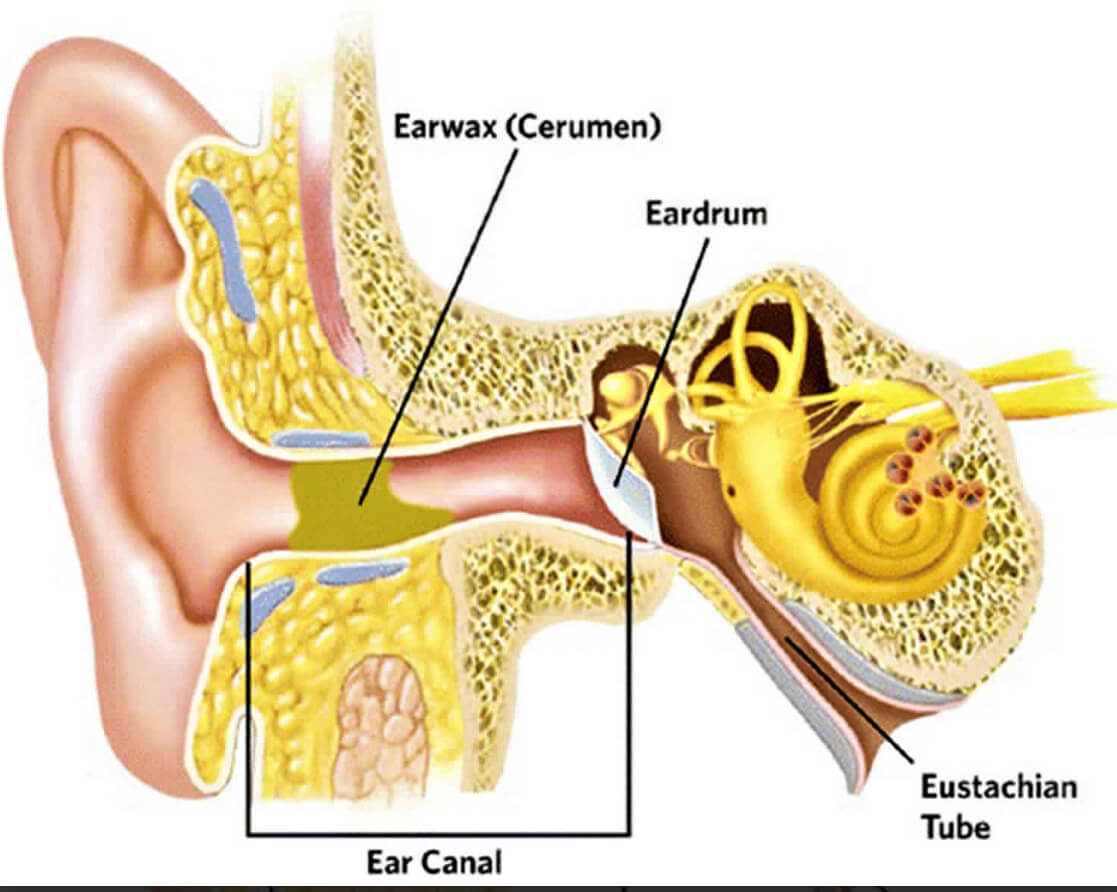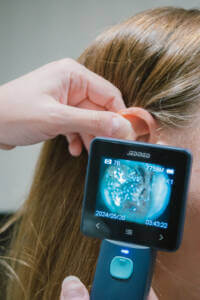
Cerumen, also known as earwax, is naturally produced by the glands in the ears to lubricate the ear canals and keep dust and debris from getting too far down in the ear canal. Cerumen typically clears itself from the ears, but in some instances can accumulate and cause a blockage.
Symptoms of a cerumen blockage include:
If a blockage occurs, it may need to be removed. This can be done at home or at your doctor’s office, depending on the size and severity of the blockage.
People commonly use cotton swabs to try and remove earwax or dislodge a blockage. However, this can sometimes cause more problems as cotton swabs may push the blockage further down into the ear canal, risking even more damage to the ear.
Cotton swabs themselves can also be accidentally inserted too far into the ear canal and can potentially damage your ear, including the possibility of rupturing your eardrum.
Physicians generally agree that cotton swabs are a bad idea for removing earwax and should only be used on the outer portions of your ear. You should never insert cotton swabs or any small object into your ear canal.
In some instances, your physican may send patients home with an at-home ear wax removal kit. Earwax removal kits can also be purchased over the counter in most drug stores.
These kits generally consist of a liquid that softens earwax and a small rubber bulb syringe. You will be given directions on how much and how often to apply the liquid to your ear canals, allowing it to sit for a while in your ears to soften up the ear wax. Bubbling and fizzing sensations in your ears are normal with use. You will then use the bulb syringe to gently flush your ears with warm water to remove the ear wax. It may take several days to completely clear earwax blockages from your ear. There are contraindications to using these kits in some people and with some ear conditions. Before attempting at-home earwax removal, it is advised to speak with your doctor to be sure it is safe for you.
To further ensure regular maintenance and prevent excessive buildup of earwax, it is beneficial to practice good ear hygiene. This can be as simple as wiping the outer ear with a clean towel or washcloth and avoiding the insertion of any objects directly into the ear canal. It is imperative that you DO NOT try to insert anything in your ear in order to pull out the extra earwax. This is exactly the reason why so many patients experience issues with earwax in the first place. Inserting any sort of foreign object into the ear should never be done unless by an ENT specialist. Regularly keeping your ears clean can prevent the wax from accumulating to the extent that it requires professional removal.
If the earwax blockage is more significant, it may need to be removed in your doctor’s office. Doctors typically use one of two methods to remove earwax: irrigation or curettage. Irrigation is the most common method your doctor will use to remove blockages. Unlike at-home earwax removal kits, your doctor may use stronger earwax removal medications in conjunction with irrigation. Carbamide peroxide is typically the main ingredient in these medications. The less common method is curettage, which involves the use

A Women getting Cerumen Removal at North Georgia Audiologist
of a curette. A curette is a long, curved tool that is used along with suction to gently scrape cerumen from the ear canal, removing the blockage.
It is crucial to maintain regular ear hygiene to prevent future buildups of earwax. However, you should never attempt to insert any objects into your ears as a means to remove earwax. This practice can lead to complications and exacerbate the problem. If over-the-counter methods are ineffective and you continue to experience symptoms, it is essential to consult with a healthcare professional who may need to manually remove the earwax using specialized tools and techniques. This ensures that the removal is done safely and effectively, preventing any potential damage to the ear canal or eardrum.
If you experience pain or discomfort as a result of earwax, or suspect you have a blockage, it’s important that you see yo
ur doctor as soon as possible to address the issue. Removing earwax doesn’t have to be painful and should bring you relief. It is crucial to be aware of more severe symptoms that may indicate a more serious condition. Should you experience any of the following: drain
age or discharge from the ear, fever, severe, persistent pain in the ear, sudden bouts of dizziness, worsening hearing loss, or a foul-smelling odor coming from the ear, contact your healthcare provider immediately. These symptoms c
ould signal a severe in
fection or other serious health issues that require prompt medical attention. To arrange a consultation with us, you can call any of our three offices in Gainesville(678-971-4647), Suwanee(770-814-1260), or Woodstock(770-726-8948)